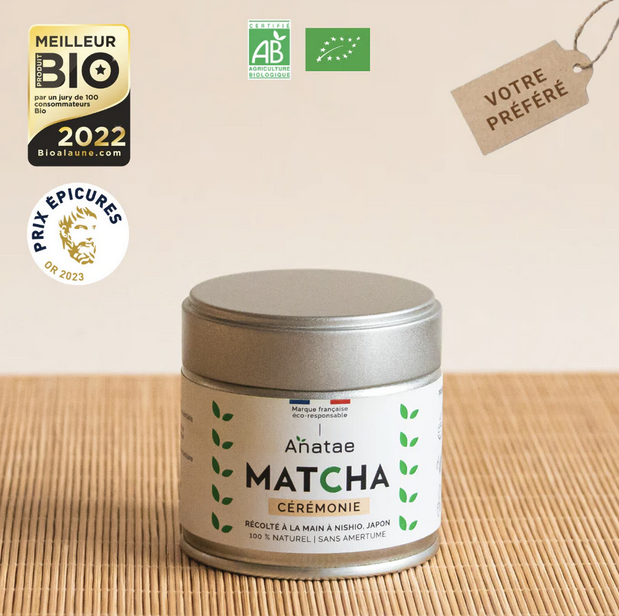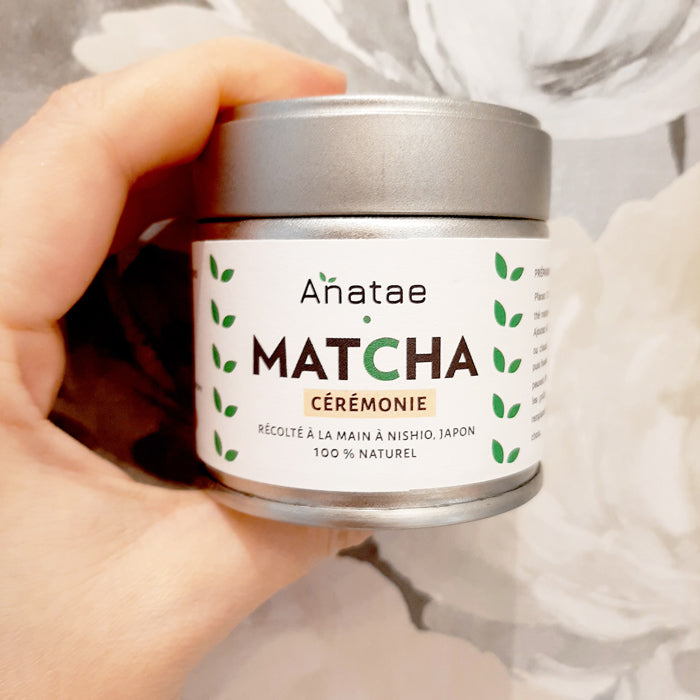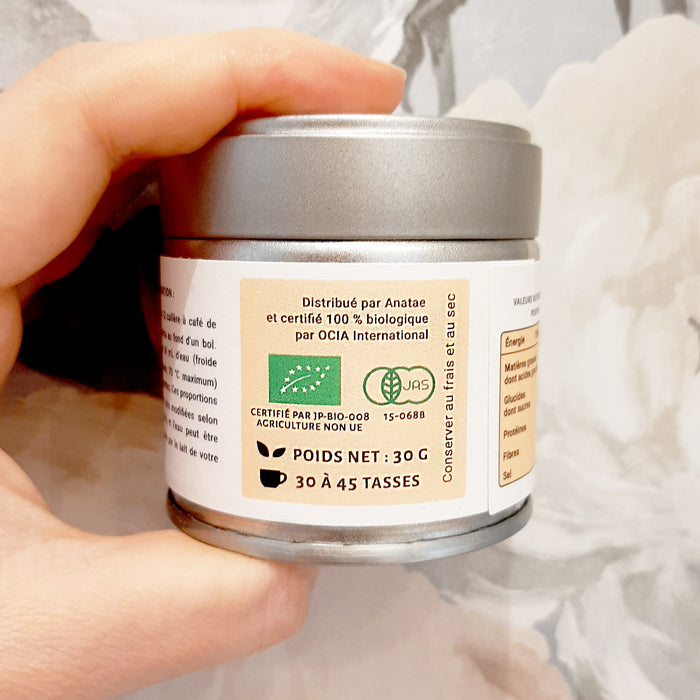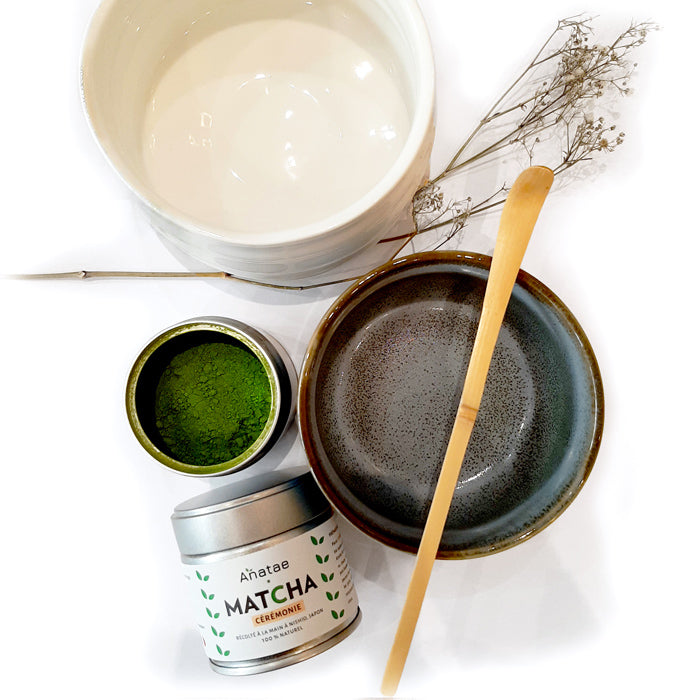



Ceremonial organic matcha, hand-harvested in Japan.
Box of 30 grams (approximately 30 to 45 cups)
Japanese tea, and especially Matcha, is a tea very rich in antioxidants , because it is "cooked" by steaming. Like steamed green vegetables, it has retained a good part of its vitamins and active ingredients.
Our Organic Ceremonial Matcha is thick, round and very smooth. You won't find the bitterness that can be found in low quality matcha. Its beautiful green color is a sign of quality. It has notes of fresh grass and seaweed.
Perfect for an invigorating wake-up call.
Preparing matcha: an ancestral ritual
The process begins with the careful selection of high-quality matcha. In a porcelain bowl, a small amount of vibrant powder is sieved, then delicately mixed with hot water using a bamboo whisk called a "chasen". This ritual requires precise gestures, creating a creamy foam and a velvety infusion.
Each step of the matcha tea preparation ritual becomes a sensory celebration, offering a unique visual, olfactory and taste experience. Let yourself be carried away by this delicate dance of flavors and aromas. Savor matcha as an invitation to serenity and delicacy.
🌱 What is Matcha?
Matcha is a Japanese green tea ground into a very fine powder, crushed between two stone millstones. It is used during Cha No Yu, the tea ceremony in Japan.
Matcha is produced only in Japan from Tencha, a green tea whose leaves are partially covered to deprive them of sunlight a few weeks before harvest, darkening the leaves and stopping photosynthesis.
This is to speed up the production of amino acids and give it that special taste that in Japan is called "umami".
Matcha is generally an expensive tea, but its price depends mainly on its quality and how it is made. Generally speaking, the less bitter a matcha is, the better and healthier it is.
A powdered tea that is not produced from Tencha leaves cannot normally be called matcha. Matcha offers all the qualities of a classic green tea, but multiplied, since its leaf is consumed and not just infused.
🍵 How to prepare your matcha properly
The matcha is sieved. This is not mandatory, but it avoids lumps.
A bamboo spoon called a chashaku is used to place between one and three spoonfuls at the bottom of the bowl. (Two chashaku are equivalent to a flat teaspoon).
Then pour a small amount of water into the bowl (around 10cl) heated to between 60 and 80°C maximum so as not to burn the tea.
Beat vigorously for a few seconds using a bamboo whisk called a chasen , making “W” shapes.
A well-prepared matcha is one with fine bubbles, no lumps and no powder remaining on the sides of the bowl.
There are two ways to prepare matcha. The usucha mentioned above and the koicha which will produce a very thick matcha with the consistency of honey. To do this, put about three to four spoonfuls in the bowl (a nice rounded teaspoon) and reduce the amount of water by half (about 5cl). The koicha will be mixed more slowly using circular movements without producing foam.
Its taste being slightly bitter, matcha goes wonderfully with sweet things. This is why it is widely used in baking today.
You can also make a “matcha latte” by adding hot milk (animal or vegetable).
🧋 Cold infusion
Put 10 to 20g of tea in 1L of cold or room temperature water. Divide into two disposable tea bags Le Jardin de Mademoiselle. Iced tea is not an exact science: the colder the water and the larger the container, the slower the tea will infuse. Taste after the first hour. If it does not have enough flavor, add 30 minutes. Taste every additional 30 minutes until its flavors are diffused into the water.







